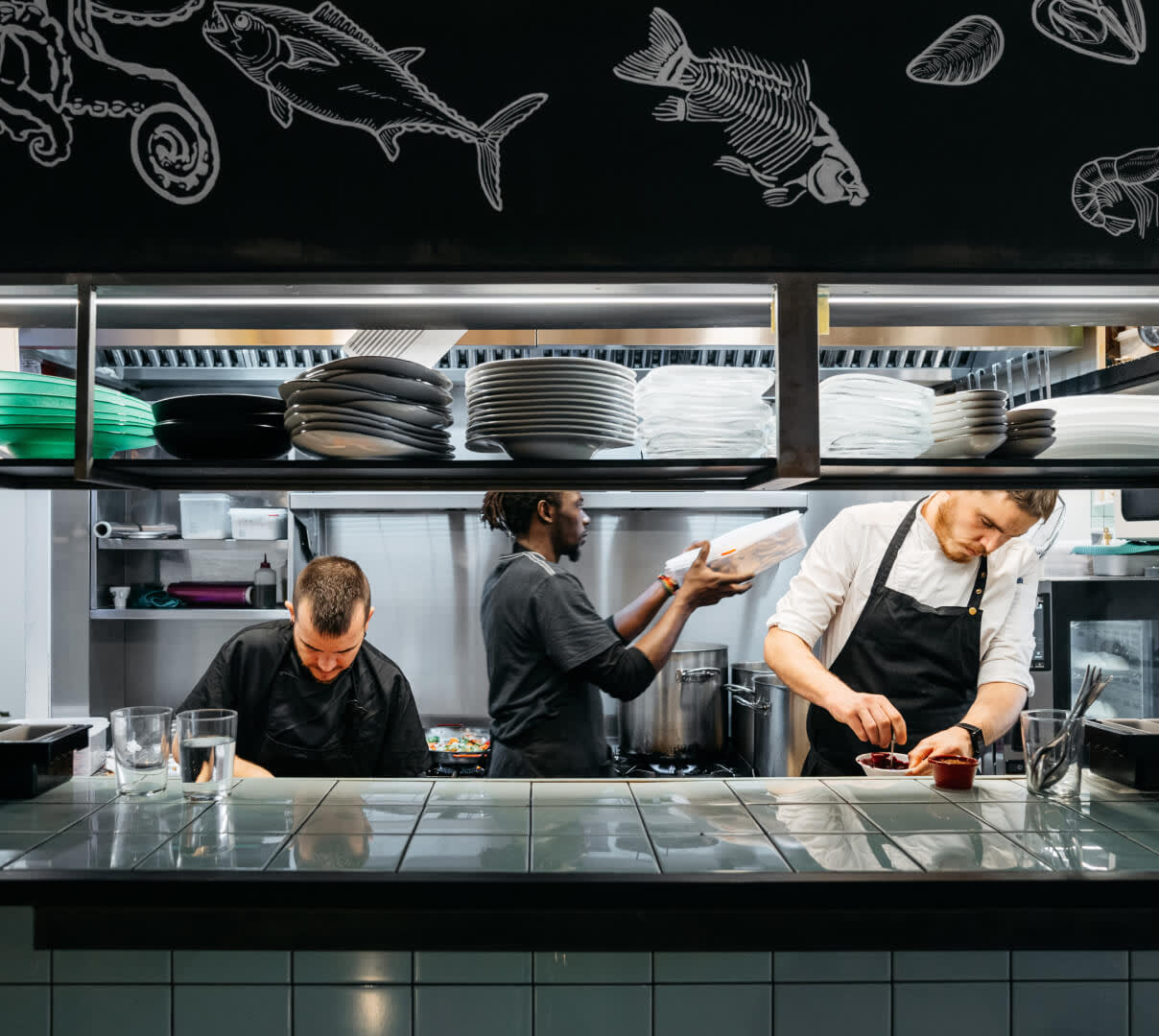Millions of people have quit their jobs across nearly every industry in recent years, but the hospitality and food service sector has been hit particularly hard. While the restaurant employee turnover rate in the US in 2022 hovered around 2.6% for the overall economy, the rate for the hospitality industry was more than double at 5.5%. And despite recent gains, restaurants are still 450,000 jobs below their pre-pandemic staffing levels — and the story is similar in other countries.
To combat the restaurant labor shortage, it’s time for restaurants to rethink their employee retention techniques. Here, we share a glimpse at what a high restaurant employee turnover rate means for the industry and your business, along with seven restaurant employee retention techniques for building a healthier business and happier team.
Why is restaurant retention so important?
Employee turnover isn’t just a problem for your team’s morale; it’s a major issue for your bottom line. “The real cost of turnover is often estimated to be 33% to two times the employee’s annual salary, depending on the complexity of the position,” according to Edie Goldberg, president of talent management firm E.L. Goldberg & Associates. Of the turnover cost, about 67% can be attributed to soft costs like lost knowledge and productivity, while 33% is in hard costs like recruitment, background checks, and temporary staffing.
The high cost of turnover is linked to a few factors, including:
Hiring time. Writing job descriptions, creating advertisements for openings, and interviewing candidates can take a substantial amount of time — and, as any business owner knows, time is money.
Training time. Once you’ve hired new employees, training can be expensive. Seasoned staff members will have to spend part of their day helping new employees instead of focusing on their usual responsibilities, reducing their productivity and your restaurant’s efficiency.
Higher food costs. High turnover can also lead to increased food costs, as new chefs and cooks are more likely to make mistakes in the kitchen. With already tight food margins, these mistakes are costly, and can even scare off customers.
In addition to accumulating avoidable expenses and inefficiencies, a high restaurant employee turnover rate often corresponds with a negative impact on company culture. When several employees leave, your remaining staff have to work longer and harder until the absences are filled and new hires are trained. Making matters worse is the widespread nature of the labor shortage — with so many job openings, your staff can easily find work elsewhere. The key to restaurant retention is identifying and addressing the core reasons employees are unhappy before they decide to quit.
Why are restaurant employees unhappy?
As anyone in the industry can attest, restaurants are challenging places to work, with long shifts, unpredictable schedules, and high-stress situations for both the front and back of house.
It’s even more difficult to retain restaurant workers in the post-pandemic era when many employees feel underappreciated and undercompensated despite being “frontline workers.” And while mask mandates and social distancing may seem like distant memories, restaurant workers continue to face stressors like inflation, supply chain disruptions, and staff shortages which affect their ability to provide the service customers expect.
At the same time, many have shared stories of racism, discrimination, and sexual harassment in the workplace. Tired of tolerating this treatment, and in the hopes of finding a job with more work-life balance, employees are calling it quits in droves, often pivoting their careers to another industry altogether. Meanwhile, restaurant operators are struggling to find people to take their place.
How to reduce restaurant employee turnover
Addressing widespread concerns in the restaurant industry won’t happen overnight, and operators will certainly have to work to retain top talent over the long haul. But despite the uphill battle ahead, there are plenty of steps restaurants can take now to boost morale and reduce staff turnover. Here are seven employee retention techniques to consider implementing at your restaurant:
Show employees appreciation for their hard work. Given the sacrifices they make on a continual basis, employees want to know they’re valued by their employers. Showing appreciation for their efforts will help make the challenges worthwhile. A small gift, spotlight post on social media, or simple handwritten thank you note can speak volumes.
Send staff engagement surveys to gauge satisfaction. Employees want to feel heard, plain and simple. Sending out anonymous employee engagement surveys gives them a chance to tell you what’s really on their minds without fear of repercussions. With their feedback, you can better gauge what needs to change at your restaurant to foster a more positive workplace.
Revamp your benefits package to meet evolving employee needs. Increasingly, restaurant owners are exploring how to attract restaurant employees through better benefits packages geared to the needs of their staff. According to recent Mercer survey data, 53% of small business leaders are planning to enhance their employee benefits programs for 2023. To stay competitive, you might consider offering valuable benefits like medical insurance, paid parental leave, and tuition assistance.
Minimize employee burnout. It’s no secret that the restaurant industry can be taxing. According to a 2021 study, the most commonly cited reason for leaving the hospitality industry in the US was a desire for a new work environment. Fed up with high stress and difficult customers, employees are looking to other industries for work. If you can, providing paid time off, offering mental health days, and organizing team activities like exercise classes may help reduce burnout and improve employee wellness.
Give employees autonomy over their schedules. Unpredictable hours and a lack of advance notice for shifts can make working in the restaurant industry challenging, especially for parents and caregivers. Allowing employees to choose their shifts and creating a schedule as far in advance as possible gives people time to find childcare and other caregiving arrangements, if necessary.
Strengthen company culture. Building a more positive restaurant culture requires a multi-pronged approach, including opening more lines of communication with employees, giving them more autonomy, and providing better benefits. But there are also simple measures you can take to boost morale, like organizing team outings, volunteer opportunities, or making time for a family meal before each shift. These will provide bonding moments for your team so they deepen their investment in each other and your restaurant, becoming more committed to its success.
Increase employee compensation. While improvements to workplace culture will make a substantial difference in reducing staff turnover, pay and benefits are one of the top reasons why employees look for new work. Raising salaries could be the most impactful move you make as an employer this year, and may pay dividends by reducing turnover. Los Angeles-based restaurant HomeState began offering a retention bonus for team members who stayed for three months or longer, which not only helped keep employees but motivated them to recruit their friends.
Implementing employee retention techniques
Of course, implementing these restaurant retention strategies will take time and resources. It may be unrealistic to make all these changes at once, but simply committing to one or two employee retention priorities in the near future can be the difference between an employee who’s on their way out the door and one who’s willing to stick around. Launching a few employee retention techniques like engagement surveys, scheduling autonomy, and a renewed company culture can help you stay competitive in this challenging market.





